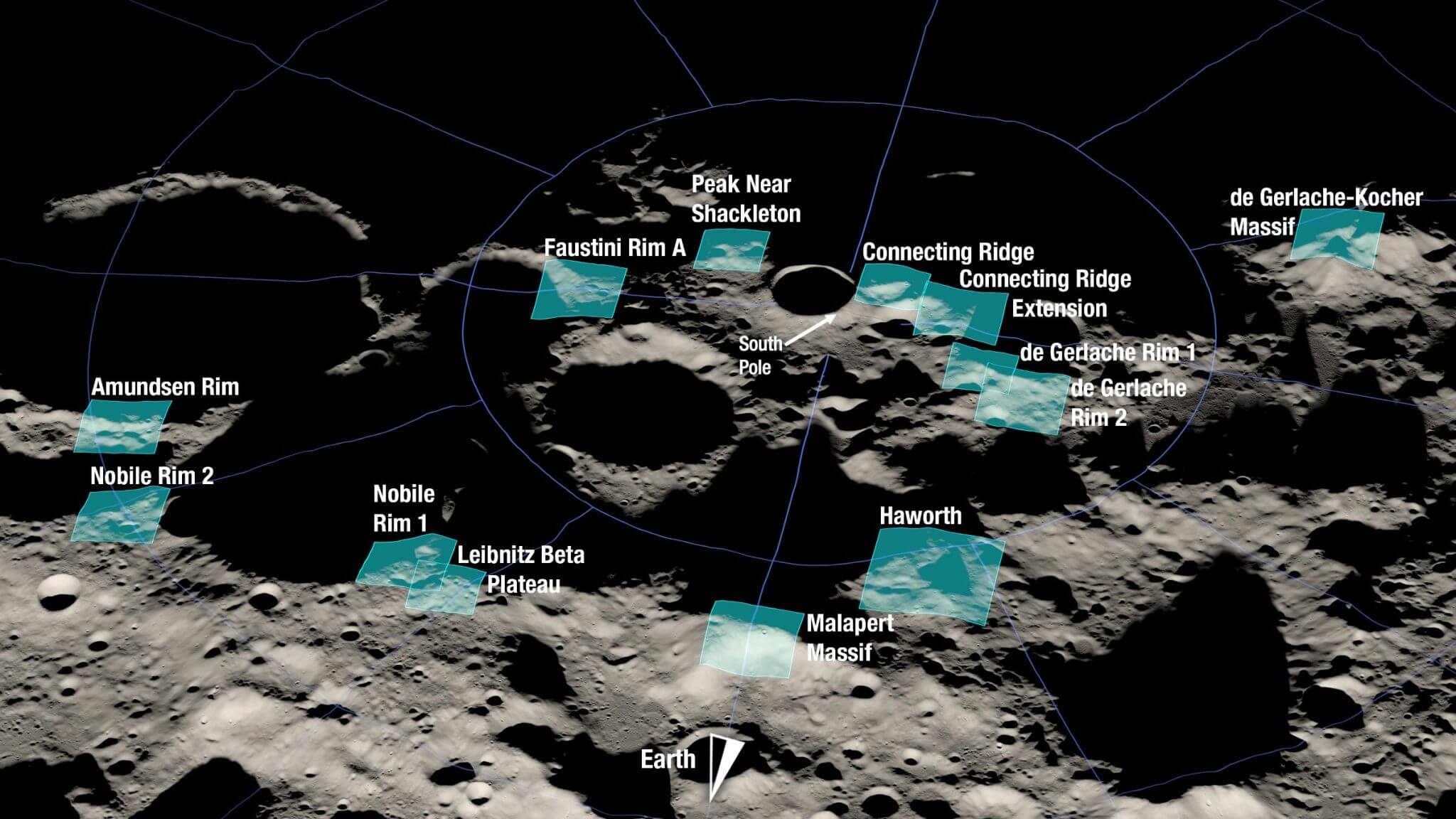NASA will discuss the formation of the final sites with the scientific community and with SpaceX whose landing vehicle, Starship is manufactured according to its capabilities

NASA has identified 13 potential landing sites near the moon's south pole for sending astronauts back to the moon as part of the Artemis program. Each area contains several potential landing sites for Artemis III. It will be the first of the Artemis missions to bring astronauts to the surface of the moon and will include the first woman to set foot on the moon.
"The selection of these areas means we are one giant step closer to returning humans to the moon for the first time since Apollo," said Mark Kirasich, associate deputy director of the Artemis System Development Division at NASA Headquarters in Washington. "When we do, it will be unlike any mission that has come before, with astronauts venturing into dark regions previously unexplored by humans and laying the foundations for future long-term sojourns."
NASA has identified the following candidate areas for the Artemis 3 landing on the Moon:
- Faustini Rim A
- Peak Near Shackleton
- Connecting Ridge
- Connecting Ridge Extension
- de Gerlache Rim 1
- de Gerlache Rim 2
- de Gerlache-Kocher Massif
- Haworth
- Malapert Massif
- Leibnitz Beta Plateau
- Nobile Rim 1
- Nobile Rim 2
- Amundsen Rim
Each of these regions is located within six degrees of the latitude of the Moon's south pole. Between them, they contain a wide variety of geological features. Together, the regions provide landing options for all potential Artemis III launch opportunities. Many regions ensure year-round launch flexibility because specific landing sites are tightly coupled to launch window timing.
An agency-wide team of scientists and engineers selected the areas. They used data From NASA's Lunar Reconnaissance Orbiter and from decades of publications and scientific findings on the moon. In addition to considering launch window availability, the team evaluated areas based on their ability to enable a safe landing. This included evaluating criteria such as terrain slope, ease of communication with Earth and lighting conditions. To determine accessibility, the team also considered the combined capabilities of the SLS rocket, the Orion spacecraft, and the system The human Starship landing provided by SpaceX.
All the regions considered are of scientific significance because of their proximity to the lunar south pole. This is an area on the moon that contains permanently shadowed areas rich in resources and terrain conditions that have not been explored by humans.
"Several of the proposed sites within the regions are located among some of the oldest parts of the Moon, and together with the permanently shadowed regions, provide the opportunity to learn about the history of the Moon using previously unobtainable lunar materials," said Sarah Noble, Artemis Lunar Science Chief in the Planetary Science Division of NASA.
The analysis team considered other landing criteria with scientific goals Specificity of Artemis III. The criteria included landing targets close enough to a permanently shadowed area to allow the crew to perform a moonwalk while limiting disruption during landing. This will allow the astronauts to collect samples and perform scientific analysis in the area without having to compromise, an analysis that will yield important information about the depth, distribution and composition of water ice discovered at the Pole the south of the moon.
By ensuring proximity to permanently shadowed areas and also considering other lighting conditions, the team identified areas that could fulfill the purpose of the moonwalk. Despite the shading, all 13 regions contain sites that provide continuous access to sunlight over a period of 6.5 days – the planned duration of the Artemis III surface mission. Because sunlight provides a source of power and minimizes temperature changes, access to it is critical for long-term stays on the Moon.
"Developing a program to explore the solar system means learning how to use the resources at our disposal while maintaining their scientific integrity," said Jacob Bleicher, NASA's chief research scientist. "Lunar water ice is scientifically valuable and also as a resource, because from it we can extract oxygen and hydrogen for life support systems and fuel."
NASA will discuss the 13 regions with the broader science and engineering communities through conferences and workshops to solicit feedback on the relative merits of each region. This feedback will influence future site selections and may help NASA identify additional areas for consideration. The agency will also continue to work with SpaceX to verify Starship landing capabilities at these sites and evaluate options accordingly.
NASA will select sites within these regions after the Artemis 3 mission launch dates are determined, which dictate transfer trajectories and surface environmental conditions.
As mentioned, the Artemis 1 spacecraft will be launched next week on the SLS launcher to orbit the moon. It will be unmanned when mannequins will take the place of the astronauts - as is customary in SpaceX.
For information on the NASA website
More of the topic in Hayadan:
- SpaceX's Starship 8 spacecraft crashed tonight during a test landing in Texas (video)
- Final preparations for the launch of the Artemis 1 SLS lunar launcher for launch at the end of the month (August 2022)
- Israel joins the project to return to the moon - Artemis
- Project Artemis and the return to the Moon: NASA's plans

One response
The anticipation is already overflowing! I can't explain how much I've been waiting to read about manned missions again and it's really about time. I grew up on the stories of the Apollo generation, visiting NASA and waiting for my generation to advance science, space exploration, and of course, multiply manned missions to new (or old) places. The time has come for our generation to have manned missions and I am very happy that this time a woman is also included in the program